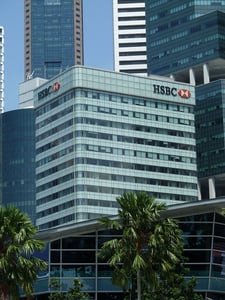Widecells Group PLC (LON:WDC) Chief Executive Officer João Andrade caught up with DirectorsTalk for an exclusive interview to discuss their agreement with Cryoviva Group to sell their stem cell insurance product, CellPlan
Q1: Some exciting news this morning for Widecells regarding the securing of a new agreement for your CellPlan product. Firstly, can you remind us what CellPlan is?
A1: CellPlan is the world’s first stem cell insurance plan to cover all the costs associated with stem cell treatment for families that have baked their baby’s umbilical cord blood stem cells.
So, currently, around the world there’s about 4 million people that have paid around £2,000 to store their baby’s umbilical cord blood stem cells but private health insurance and national healthcare systems didn’t cover for this type of treatments so for that reason, we have developed and introduced CellPlan to the market. We have been signing a number of agreements in Europe, in Brazil and now starting to prepare to launch on the Asian market.
Q2: You’ve just mentioned the Asian market, this agreement that you’ve secured is with Cryoviva, can you tell us a bit more about who they are and the impact of this deal?
A2: As I mentioned, we have developed this insurance policy to cover costs associated with treatments when using umbilical cord blood stem cells, we have always looked to clinch the first deal with one of the largest cord blood banks in the world and we have just done that Cryoviva.
Cryoviva is not only one of the largest cord blood banks in Asia but worldwide as well. They have around 250,000 existing clients, all uninsured, waiting for solutions such as the one that we have developed with CellPlan and they have around 25,000 new clients very year. So, it’s very interesting to see a cord blood bank this size was interested in the collaboration with CellPlan and started to introduce the product to their clients as soon as possible.
Q3: Cryoviva have a significant client base in multiple territories, how will you be targeting those clients?
A3: So, Cryoviva has presence in Thailand, India and Singapore, we are going to launch one country at a time starting in the second semester of this year.
This is not much different than what we have done in the UK during our pilot tests with BioVault Technical which was the first agreement signed with a cord blood bank and we have an imminent launch in Spain with a cord blood bank called Stem Cell Spain which is about to happen. That’s a combination of marketing campaigns for new clients where some of the cord blood banks that we’re working with are including the first-year policy to all their new clients so that’s potentially what we have here on the table as well.
In terms of approach, we have an e-commerce platform where the client will be able to purchase the product directly, we have a call centre, we have proposed forms which is all done offline, so we have a series of distribution channels which we are exploring. The main one is really working with cord blood banks because we know exactly where the clients are and having the cord blood banks to introduce the product to their clients we think is the best route to have a higher conversion rate.
Q4: With these new jurisdictions, this deal obviously greatly increases CellPlan’s global reach, the product is already available for purchase in the UK, as you said, and it’s set to be launched imminently in Spain and then later this year in Brazil. What’s made Widecells Group focus your attention now on Asia?
A4: Well, that’s because Asia is one of the markets within the stem cell industry that is growing more globally so it’s an emerging market, it’s also interesting because they have mainly different revenue model, or different business model, than cord blood banks in Europe.
So, in Europe, normally families pay an upfront amount for 25 or 30 years storage of their baby’s umbilical cord blood stem cells whilst in Asia, Cryoviva is a prefect example, normally an upfront amount is charged for processing the stem cells and the first years’ storage and then every year families will keep paying for storage, renewing the storage so that the stem cells can be frozen , they pay around $100-$150.
With that in mind, there is already a repetition model in these countries, so we think that an insurance product which is a payment offered yearly premium is going to be a very sticky product because if people are paying to keep their stem cells frozen they will most likely keep paying the insurance to access treatment in case they need it in the future.
So, the main reason why we are looking in Asia is their current business model and the fact that this is an emerging market and the region in the world where the stem cell industry is growing more.
Q5: Finally, on a wider market note, stem cell therapy is making a lot of headlines at the moment, do you believe there’s a change in tide in terms of more people becoming aware of the potential benefits of this treatment?
A5: Yes, I think things have been changing. I have been involved in this industry for about 10 years and over the past 2/3 years, there has been some accelerated programmes for cell therapies being implemented from Japan, in the UK and now Europe is doing the same.
So, we’re seeing a lot of funding, even from big pharmaceutical companies, to stem cell and cell therapies and started to receive the first licenses for new treatments as well, all of these have been making headlines.
There’s great development in regenerative medicine whilst up until now, stem cells could mainly be used for blood diseases and disorders and as we move more towards regenerative medicine, I think that the awareness for the potentials of stem cells treatment. Also, what stem cell treatment can already so today, I think it’s only going to help the industry go in the right direction.
So, yes, I agree that over the past maybe 2/3 years stem cell has started to have a sort of connotation of being able to cure diseases that could not be treated with classic medicine.





































